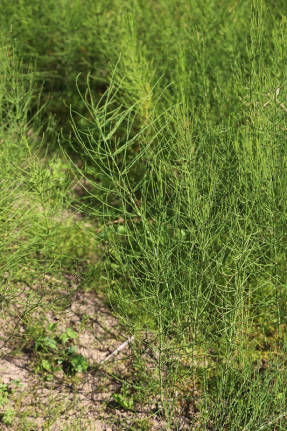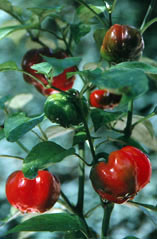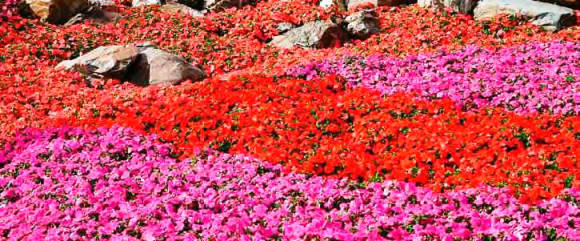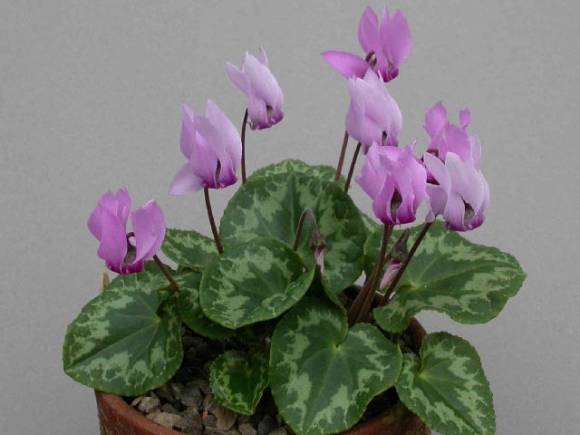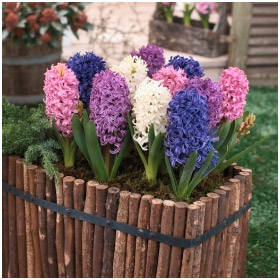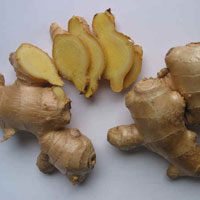Hatiors in the spring take over from their closest relatives - Schlumberger, whose flowering time falls on the winter months.
In culture, 3 large-flowered species, often called ripsalidopsis, are widespread. These are Hatiora pink, Hatiora Gertner and their artificially created hybrid - Hatiora Greser, as well as numerous varieties obtained by crossing these species, which differ in a wide variety of colors. Hatiora blooms in spring, on the eve of Easter or Trinity, and therefore is called the Easter or Trinity Cactus. Among the small-flowered ones, you can often find the salicum hathiora with peculiar pin-shaped segments of the stems, also known as the Dancing Bone Cactus.
 |
More about species diversity - on the page Hatiora.
Hatiors are native to the mountainous coastal rainforests of Brazil, where they live in crevices in trees or rocks and lead an epiphytic lifestyle. According to the conditions of existence and lifestyle, they are similar to Schlumberger, therefore, at home, these forest cacti require similar conditions: bright diffused light, moderate heat, high air humidity, loose and moderately moist soil, cool content before flowering.
Lighting. Hatiora in the summer requires bright, but diffused light, direct sunlight will cause burns to the stems. If kept in the shade or on northern windows, flowering may not occur.
In the cold period, which is necessary for the setting of flower buds, a relatively low illumination of about 1000 lux is sufficient with a day length of about 10 hours, which corresponds to natural winter light.The length of daylight hours in winter will have an impact on flowering.
Temperatureand the conditions for laying flower buds... In summer, the optimum temperature for keeping is +18 ... + 25 ° C, hatiora does not like heat, at temperatures above + 27 ° C, stem segments may fall off.
 |
In the fall, it is necessary to lower the temperature in order to prevent further growth of the shoots and to facilitate their ripening, since the buds can only form on the matured apical segments.
In winter, it is necessary to provide the plant with coolness with a temperature of +10 ... + 15 ° C for a period of at least 50 days, and for some varieties - up to 100 days. At a temperature of + 10 ° C, the setting of flower buds will occur regardless of the length of daylight hours. At a temperature of + 15 ° C, it is imperative to observe a short daylight hours (8-10 hours). At temperatures below + 8 ° C, the formation of flower buds may stop.
Low temperatures, +10 ... + 12 ° C, and naturally short winter days will lead to good bud formation.
At the end of the cold period, an increase in the length of daylight hours, which naturally occurs by the end of March, and an increase in temperature to +18 ... + 20оС will accelerate the development of buds and lead to abundant flowering in April-May. At lower illumination at the end of the cold phase, the temperature should not exceed + 20 ° C, otherwise the buds may fall off.
 |
Watering it is produced year-round as needed to maintain the soil in a moderately moist state, preventing waterlogging and overdrying of the earthen coma. In the summer, during the period of active growth in warmth, more frequent watering is required; in winter, with a cool content, the frequency of watering is reduced.
Air humidity. Hatiora is native to tropical rainforests and prefers high humidity. Spray the plant frequently in a dry room at temperatures above + 18 ° C.
Priming lightweight and well-drained. You can use a ready-made universal slightly acidic substrate based on high-moor peat, adding loosening components, small pieces of bark or perlite to it.Hatiors are grown in small pots. Transfer. Young plants are transplanted by the transshipment method once a year in spring, adult specimens - once every 3-5 years. Top dressing can be produced with a universal complex fertilizer for potted plants (NPK 10-10-10) in a half dose during the active growing season. Fertilization is stopped in November and resumed only a month after the end of flowering, during this period the cactus rests. Reproduction. Some difficult-to-grow species of hatiors can be propagated by grafting onto well-growing rootstocks, such as peresky prickly (Pereskia aculeate) and Garrisia Yusbert (Harrisia (Eriocereus) jusbertii). But mostly hatiors are propagated by rooting cuttings. After flowering, 2-3 stem segments are separated and dried in the air for 2-5 days. The bottom is powdered with Kornevin and immersed in half of the lower segment in a slightly moist loose peat substrate with perlite or sand. Water from the pallet sparsely and only after the soil has completely dried out. Within a year, this stalk can turn into a flowering plant. Pests and diseases. Hatiora is susceptible to attack by mealybugs, scale insects, spider mites. About control measures - in the article Houseplant pests and control measures. When the soil is waterlogged, especially in cool conditions, the hatiora can be affected by rot. Most often, the stem is damaged at the surface of the soil, it softens and turns brown. The best way to rescue in this case is to root healthy parts of the plant.

